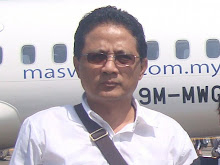Sunday, August 28, 2011
ASEAN Connectivity
The idea of ASEAN Connectivity was first proposed bt Thai PM Abhisit Vejjajiva at the Opening Ceremony of the 42nd Foreign Ministers’ Meeting on July 2009 in Phuket. As the Chairman of ASEAN, PM Abhisit proposed that a “ Community of Connectivity “ should be one objectives of ASEAN Community 2015. It means that
- goods and peoples,
- investment and initiatives,
can travel obstacle-free throughout the region. A fully integrated ASEAN economy as a single market and production base must have such connectivity built into both its hardware and software. It is expected that through a well-connected Community, ASEAN can realize its full economic potentials as well as take maximum advantage of the strategic location linking the massive economies of South Asia on the West and Northeast Asia to the North.
This initiative was endorsed with the adoption of the ASEAN Leaders’ Statement on ASEAN Connectivity at the 15th ASEAN Summit held in Hua Hin on 24 Oct 2009. ASEAN Leaders mandated the creation of a High Level Task Force ( HLTF ) on ASEAN Connectivity to devise a Master Plan on ASEAN Connectivity by the 17 ASEAN Summit 2010. The Master Plan is both a strategic document for achieving overall ASEAN Connectivity and a plan of action for immediate implementation for the period 2011-2015 to connect ASEAN through enhanced :
- physical infrastructure development ( physical connectivity ),
- effective institutional arrangement ( institutional connectivity ) and
- empowered people ( people-to-people connectivity ).
On 28 Oct 2010, ASEAN Leaders adopted the Ha Noi Declaration of the Adoption of the Master Plan on ASEAN Connectivity. In this Declaration, the ASEAN Leaders recognized that the Master Plan on ASEAN Connectivity will
- promote economic growth,
- narrow development gaps,
- ASEAN Integration and Community building process,
- enhance competitiveness of ASEAN,
- promote deeper social and cultural understanding as well as
- greater people mobility and connect its member states within the region and with the rest of the world.
The leaders also gave a task to Ministers, the ASEAN Connectivity Coordinating Committee and the National Coordinators, supported by the ASEAN Secretariat, to coordinate and oversee the implementation the Master Plan on ASEAN Connectivity and to report the ASEAN Leaders the progress of its implementation on a regular basis through the ASEAN Coordinating Council.
As such, “ connectivity “, according to the document of the Master Plan on ASEAN Connectivity, refers to the physical, institutional and people-to-people linkages that comprise the foundamental support and facilitative means to achieve the political-security, economic and socio-cultural pillars towards realizing the vision of an integrated ASEAN Community.
According to the document, the key element of ASEAN Connectivity include :
(1) physical connectivity ( i.e transport, energy and information and communication technology ) ;
(2) institutional connectivity ( i.e trade liberalization and facilitation, investment and services liberalization and facilitation, mutual recognition agreements/arrangements, regional transport agreements, cross-border procedures, capacity building programs );
(3) people-to-people connectivity (i.e education and culture as well as tourism ).
Among the main issues, in the ASEAN Connectivity are discrepancy and disconnectivity. First, there is a discrepancy in the progress of connectivity between the Wesyern Part of ASEAN, which is landmass in nature and the Eastern Part of ASEAN which is archipelago. Second, as it concerns maritime transport, connectivity between the Western Part of ASEAN and the Eastern Part of ASEAN is poor ( thus, this represents an issue of disconnectivity ). Third, the Eastern Part of ASEAN, which largely consists of the Eastern Part of Indonesia, represents the weakest link in the overall ASEAN Connectivity. Forth, pull factors are needed to speed up the process of connectivity building. These four issues must be addressed accordingly by ASEAN.
(quoted from ASEAN Connectivity in Indonesia Context – A Preliminary Study on Geopolitics of Hydropower and Maritime Transport – Centre of Policy Analysis and Development For Asia Pacific and African Regions, Policy Analysis and Development Agency, Ministry of Foreign Affairs of the Republic of Indonesia, 2011 ).
Subscribe to:
Post Comments (Atom)

No comments:
Post a Comment